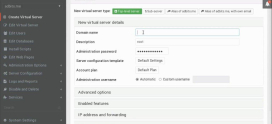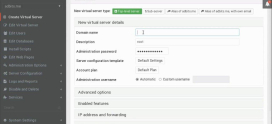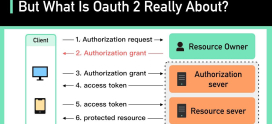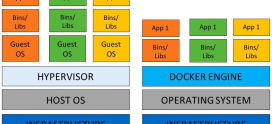
How to Prevent Security Misconfigurations in Servers
We’ve all seen the headlines: servers compromised, sensitive data stolen, and businesses facing disastrous consequences. It’s a chilling reality that can happen to anyone. Perhaps you’re running a small business or managing a personal project, and you can’t help but feel a twinge of anxiety about keeping your servers secure. You’re not alone in this—many people struggle with security misconfigurations, often wondering where to start in the world of server security.
What if I told you that preventing security misconfigurations is not as daunting as it might seem? Like safeguarding a treasure chest, it’s all about knowing the right locks to install and the correct way to use them. The good news is that with a few practical steps, you can create a secure environment that protects your assets and gives you peace of mind. In this article, we will walk through essential strategies to prevent security misconfigurations in your servers, all while reassuring you that you have the power to take control of your digital safety.
So, are you ready to dive in? Let’s explore these simple yet effective solutions together!
Understanding Security Misconfigurations
Before we can tackle the issue, it’s essential to understand what we mean by security misconfigurations. These happen when a server or network device is set up incorrectly, leaving it vulnerable to attacks. Picture a house with unlocked doors and windows; it only takes a savvy burglar to slip in unnoticed. Similarly, misconfigured servers can allow hackers easy access to your data without you even knowing it.
Common Types of Security Misconfigurations
Unnecessary Services Running
One common misconfiguration occurs when unnecessary services are left running on a server. Think of it like leaving extra doors open in your house; each one is an entry point for potential intruders. If a service isn’t required for your application, it’s best to turn it off.
Default Passwords
Using default passwords is another security blunder that’s alarmingly frequent. Much like using “1234” as a combination for your safe, these easily guessed passwords leave you vulnerable. Always remember to change any default passwords during the initial setup of your servers.
Inadequate Network Segmentation
Network segmentation involves dividing your network into different parts to control traffic and improve security. Imagine your home having separate rooms with different locks; if one room is compromised, the others remain safe. Failing to segment your network can lead to widespread exposure if one part is attacked.
Best Practices for Preventing Security Misconfigurations
Regularly Audit Your Server Configuration
Performing regular audits of your server configuration is crucial. Regularly checking your settings and permissions allows you to identify any potential weaknesses. It’s similar to checking the locks on your doors and windows periodically; doing so ensures everything remains secure.
Use Automated Tools for Configuration Management
Automation can simplify the management of your server’s configuration and minimize human error. Using tools like Ansible or Puppet can help ensure that configurations are consistent across your servers. Think of them as your robot assistants, ensuring every door is locked correctly without your having to remember every detail.
Establish a Strong Security Policy
A comprehensive security policy lays the groundwork for a secure environment. This policy should include guidelines for creating secure configurations, updating them regularly, and documenting changes. It’s like having a rulebook for your household; when everyone knows the rules, harmony is easier to achieve.
Regularly Update Software and Systems
Keeping your software up to date is vital for security. Developers frequently release updates to patch vulnerabilities that could be exploited. Think of your software like the paint on your house; occasional fresh coats will keep it safe and appealing. Don’t ignore those update notifications!
Implement Access Controls
Defining access controls ensures that only authorized personnel can make changes to your server configurations. Imagine having a key to every room in your house but only giving trusted friends a spare key; it keeps things secure while maintaining access where needed. Use role-based access controls where possible to restrict changes to those who absolutely need it.
Employee Training and Awareness
Even with the best of technology, the human element is often the weakest link in cybersecurity. Regular training sessions can ensure your staff understands the importance of security practices and the risks involved in misconfigurations. Consider this like teaching family members how to lock up the house; everyone needs to know their role to keep everything secure.
Backup and Recovery Plans
Even with all the precautions in place, accidents can happen. Having a backup and recovery plan ensures that you can quickly restore operations even if a misconfiguration leads to data loss or system failure. Think of it as having a spare set of keys; when locked out, it’s a lifesaver. Regular backups can save you from catastrophic losses.
Seek Expert Help if Needed
If this all feels a bit overwhelming, consider seeking professional assistance. Utilizing experts in server security can be an invaluable investment, much like hiring a locksmith to secure your home. Services like DarazHost can provide reliable support and tailored solutions to help mitigate risks associated with misconfigurations.
FAQs
What are common security misconfigurations?
Common security misconfigurations include using default passwords, failing to disable unnecessary services, lacking proper access controls, and inadequate network segregation. Each of these leaves your server vulnerable to attacks.
How can I secure my server configuration?
Securing your server configuration involves regular audits, updating software, implementing access controls, and using automated tools for consistency. Establishing a strong security policy also aids in preventing misconfigurations.
Why is employee training important for security?
Employee training is crucial because the human factor can often be the weakest element in security. Well-informed staff can recognize potential threats and follow secure practices, greatly reducing the chance of misconfigurations.
What tools can help manage server configuration?
Tools like Ansible, Puppet, and Chef assist in automated configuration management. They help ensure that server settings are correct and standardized, reducing the chances of human error.
What should I do if a misconfiguration occurs?
If a misconfiguration occurs, you should immediately assess the damage, restore previous configurations from backups, and analyze what went wrong. This assessment can help prevent future incidents.
Conclusion
Preventing security misconfigurations may seem challenging, but remember, every step you take towards securing your server counts. By auditing configurations regularly, training employees, and leveraging the right tools, you can create a robust defense against potential threats. With proper precautions, you can keep your digital assets safe—just like you would ensure your home is secure.
So, take a deep breath, trust in your ability to implement these strategies, and know that you’re on the right path toward a secure server environment. If you ever feel overwhelmed, don’t hesitate to seek guidance from professionals like DarazHost, who can help you navigate the complexities of server security. Your peace of mind is worth the effort!









